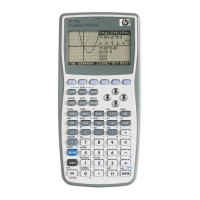Recursive or non-recursive
First, second & general terms
14
T
T
H
H
E
E
S
S
E
E
Q
Q
U
U
E
E
N
N
C
C
E
E
A
A
P
P
L
L
E
E
T
T
This aplet is used to deal with sequences, and indirectly series, in both non-recursive form (where T
n
is a
function of n) and implicit/recursive/iterative form (where T
n
is a function of T
n-1
).
Examples of these types of sequences are:
(explicit/non-recursive)
T = 3n − 1 .....
{
2, 5,8,11,14,.....
n
T = n
2
.....
{
1, 4, 9,16, 25,.....
}
n
n
T = 2 .....
{
2, 4,8,16, 32,.....
}
n
(implicit/recursive)
T = 2T
n−1
−1 ;T
1
= 2 .....
2, 3, 5, 9,17,.....
n
5T
=−
T ;T
1
=
2 .....
{
2, 3, 2, 3, 2,.....
}
n n−1
T
=
T
+
T ;T
1
=
1,T
2
=
1 .....
{
1,1, 2, 3, 5,8.....
}
n n−1 n−2
As with most aplets, the Sequence aplet starts in the
SYMB view when
you enter formulas. The Sequence aplet uses the terminology U(N)
rather than the other commonly used T
n
for its definitions in order to
avoid having to use subscripts which would not show up well on the
screen.
All functions of this type are assumed to be defined for the positive
integers only – ie. for
N = 1,2,3,4…
Each definition has three entries -
U1(1), U1(2) and
U1(N) (see above) but it is not always necessary to
supply all three.
For example, if the sequence is non-recursive then only the
U1(N) entry
needs to be filled in, with the other two entries calculated automatically
from the definition as shown in the sequence of two screens shown right.
99

